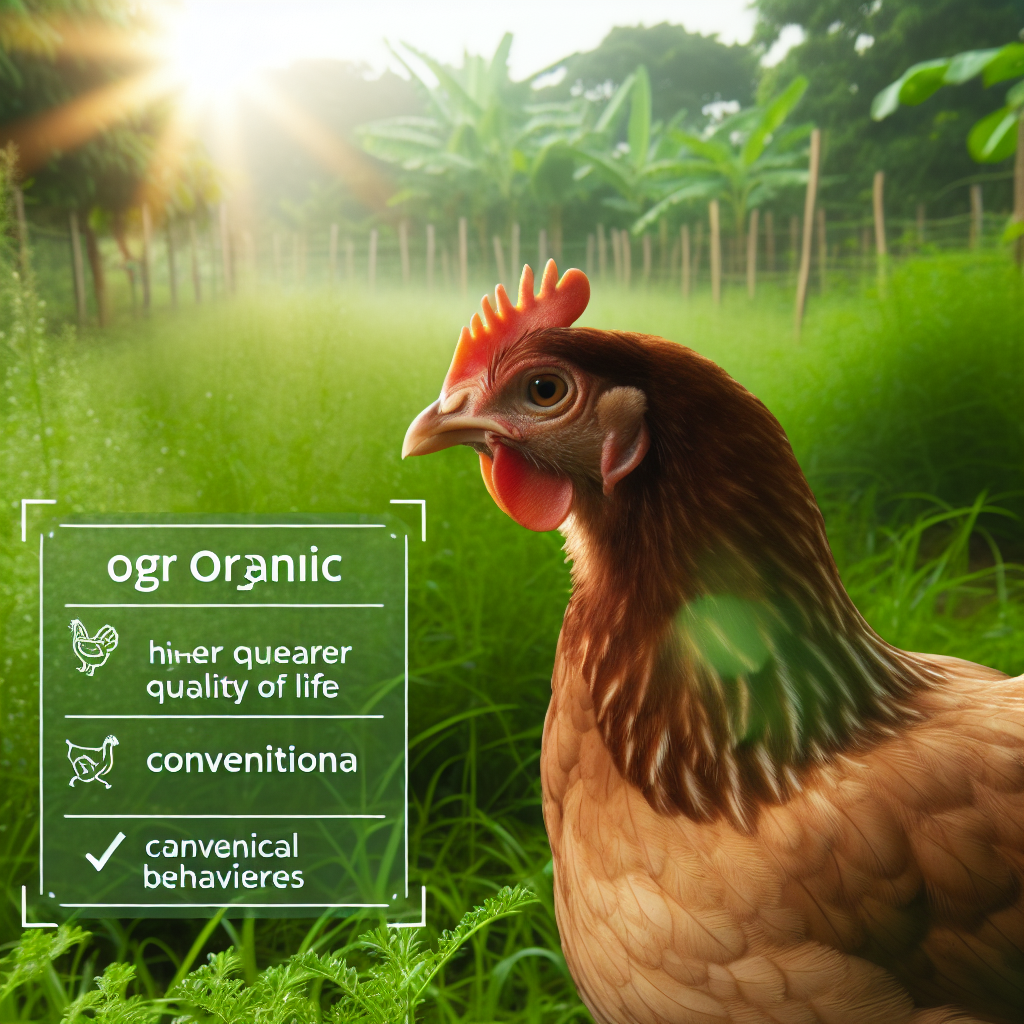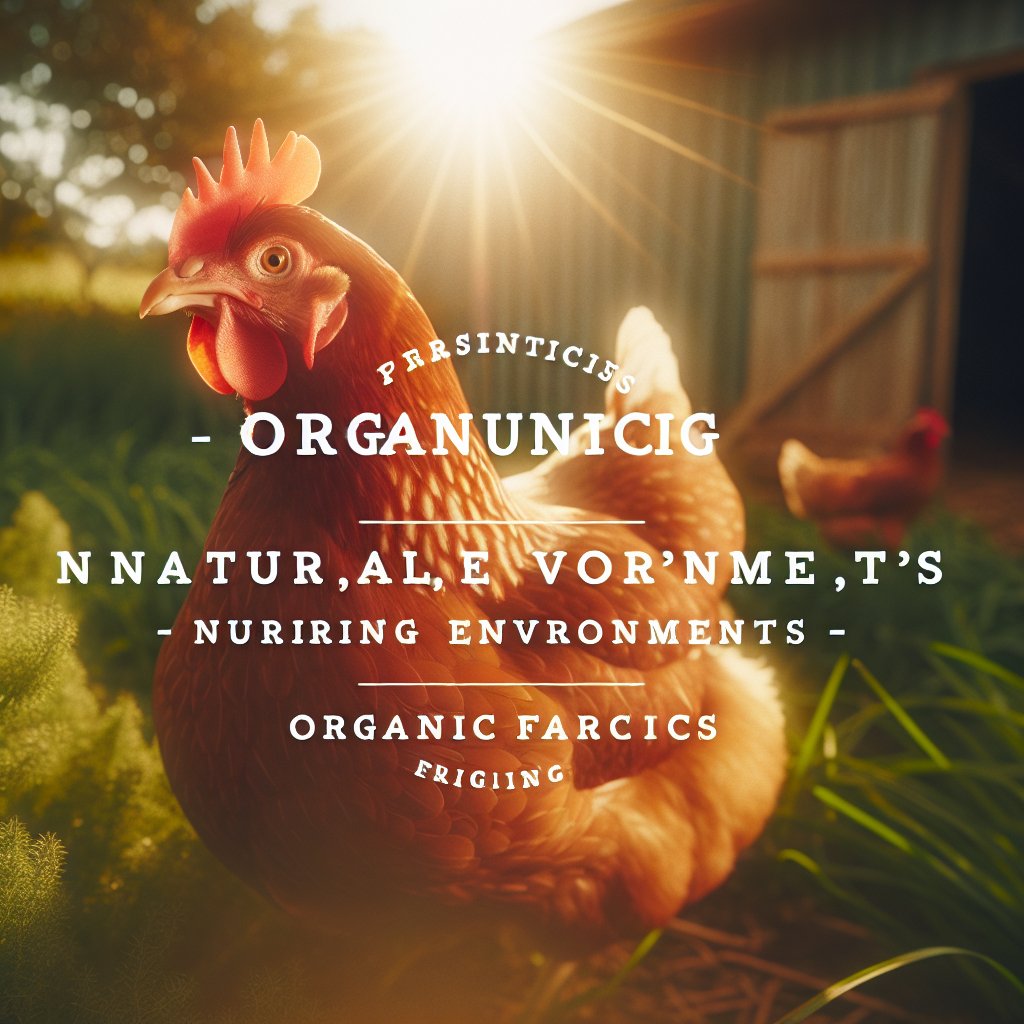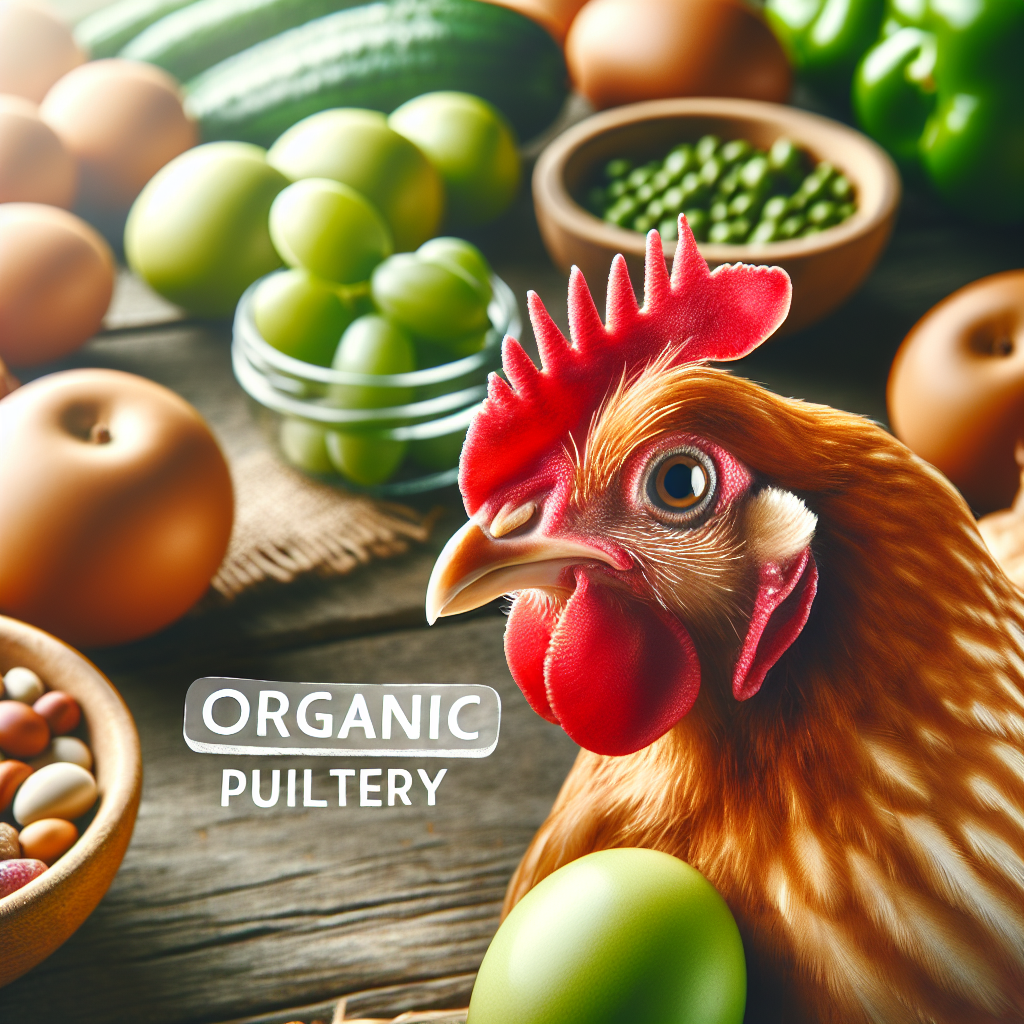In the world of organic farming, managing pests and diseases in a chicken farm without the use of synthetic chemicals can be a challenge. However, it is not an impossible task. With the right knowledge and strategies, you can ensure the health and well-being of your flock while maintaining the principles of organic farming. In this article, we will explore various techniques and natural methods that you can implement to effectively manage pests and diseases in your organic chicken farm, promoting a sustainable and chemical-free environment for your feathered friends.
Prevention measures
Maintaining proper hygiene
To effectively manage pests and diseases in an organic chicken farm without relying on synthetic chemicals, it is crucial to prioritize proper hygiene practices. This includes regularly cleaning and disinfecting the chicken coop, as well as providing clean and fresh bedding materials. Additionally, it is important to practice good egg management, ensuring that dirty or cracked eggs are promptly removed to prevent attracting pests. By maintaining proper hygiene, you can significantly reduce the risk of pest infestations and disease outbreaks in your flock.
Implementing biosecurity protocols
Biosecurity measures play a vital role in preventing the introduction and spread of pests and diseases within an organic chicken farm. These protocols include restricting access to the farm, sanitizing footwear and equipment, and isolating new birds before integrating them into the flock. By implementing strict biosecurity measures, you can minimize the chances of pests and diseases being introduced into your farm, thus reducing the need for chemical interventions.
Providing a balanced diet
A balanced diet is essential for maintaining the overall health and immunity of chickens, making them less susceptible to pests and diseases. By offering a varied and nutritious diet that meets the specific nutritional needs of your flock, you can strengthen their immune systems and enhance their ability to naturally defend against pests and diseases. High-quality organic feed, supplemented with fresh fruits, vegetables, and herbs, can contribute to the overall well-being of your chickens.
Ensuring adequate spacing and ventilation
Proper spacing and ventilation in the chicken coop are crucial for maintaining good air quality and reducing the risk of pests and diseases. Overcrowding can lead to stress, weakened immune systems, and increased susceptibility to pests. Ensure that each bird has sufficient space to move around comfortably, and provide adequate ventilation to prevent the buildup of moisture and ammonia. Good airflow can help deter pests and promote a healthier environment for your chickens.
Protecting chickens from predators
Predator control is essential to prevent losses in an organic chicken farm. By implementing measures such as secure fencing, sturdy coops, and predator-proofing techniques, you can safeguard your flock from attacks. Predators not only pose a direct threat to the chickens but can also cause stress and decreased resistance to diseases. Protecting your chickens from predators will enhance their overall welfare and reduce the risk of disease transmission.
Regular health checks
Regular health checks are essential for early detection of any potential issues in your chicken flock. Regularly inspect your birds for signs of illness, such as unusual behaviors, abnormalities, or physical changes. Promptly address any health concerns by consulting with a veterinarian or an experienced poultry professional. By conducting regular health checks, you can detect and address any potential pest or disease issues before they become more severe, minimizing the need for synthetic chemicals in treatment.
Natural pest control methods
Introducing beneficial insects
One effective method of controlling pests in an organic chicken farm is by introducing beneficial insects that prey on harmful pests. For example, ladybugs and lacewings are natural predators of aphids, while predatory mites can help control spider mites. By creating an environment that supports and encourages the presence of beneficial insects, you can establish a natural balance and reduce the reliance on chemical interventions.
Using physical barriers
Physical barriers can be highly effective in preventing pests from accessing the chickens or their feed. For example, installing screens or nets around the coop can prevent flies and mosquitoes from entering and bothering the birds. Similarly, using wire mesh fences can protect the chickens from larger predators such as foxes or raccoons. By employing physical barriers, you can create a physical barrier that deters pests and reduces the need for chemical pest control methods.
Creating diverse habitats
Creating diverse habitats within and around the chicken farm can contribute to pest control. Planting a variety of plants, such as herbs and flowers, can attract beneficial insects that prey on pests. Additionally, providing nesting boxes or log piles can attract beneficial birds and mammals that help control pest populations naturally. By promoting biodiversity and creating diverse habitats, you can contribute to the ecological balance and reduce the reliance on synthetic chemical interventions.
Implementing crop rotation
Crop rotation can be a useful technique to manage pests in organic farming practices. By rotating the areas where crops are planted, pests that target specific crops are disrupted, reducing their population. This can help break pest life cycles and minimize the need for chemical pest control. Additionally, rotating crops with leguminous plants can naturally enhance soil health and fertility while reducing the risk of certain pests and diseases.
Utilizing trap crops
Utilizing trap crops involves planting specific crops that attract pests away from the main crops. For example, planting marigolds or nasturtiums can attract aphids, drawing them away from the main vegetable crops. These trap crops can then be carefully managed or removed to control pest populations. By strategically planting trap crops, you can divert pests and reduce the need for synthetic chemical pesticides.
Deploying neem oil
Neem oil, derived from the seeds of the neem tree, is a natural and organic pesticide that has been used for centuries. It acts as a repellent, insecticide, and fungicide, making it effective against a wide range of pests and diseases. Neem oil is considered safe for humans and animals, while still providing an effective means of pest control. By utilizing neem oil, you can manage pests in an organic chicken farm without relying on synthetic chemicals.
Disease prevention and control
Proper flock management
Proper flock management is essential for preventing and controlling diseases in an organic chicken farm. This includes maintaining a clean and well-ventilated coop, providing appropriate nutrition and water, and managing the flock’s stress levels. By practicing good flock management, you can support the overall health and resilience of your birds, reducing their susceptibility to diseases.
Quarantine procedures
Implementing quarantine procedures for new birds is crucial to prevent the introduction of diseases into your flock. New birds should be isolated and closely observed for any signs of illness before being integrated with the existing flock. This helps to identify and address any potential health issues before they can spread to the rest of the flock.
Vaccination protocols
Vaccinations play a vital role in preventing and controlling diseases in organic chicken farming. Consult with a veterinarian or poultry health professional to develop a vaccination protocol that is suitable for your flock. Vaccinations can help protect against common diseases such as Newcastle disease, infectious bronchitis, and Marek’s disease, among others. By following proper vaccination protocols, you can significantly reduce the risk of disease outbreaks and minimize the need for chemical treatments.
Implementing proper waste management
Proper waste management is crucial for disease prevention in an organic chicken farm. Regularly remove and dispose of manure and litter to prevent the buildup of pathogens and pests. Consider composting the waste to produce organic fertilizer that can be used in the farm’s soil. By implementing proper waste management practices, you can minimize disease risks and maintain a healthier environment for your chickens.
Regular cleaning and disinfection
Regularly cleaning and disinfecting the chicken coop and equipment is essential for disease prevention. Use organic and non-toxic cleaning agents to maintain a clean and hygienic environment. Pay attention to high-touch areas and ensure thorough cleaning between flocks. By practicing regular cleaning and disinfection, you can eliminate potential disease sources and reduce the reliance on chemical disinfectants.
Utilizing herbal remedies
Herbal remedies have been used for centuries to treat ailments in both humans and animals. A range of herbs, such as oregano, thyme, and garlic, possess antimicrobial and immune-stimulating properties that can support the health and immunity of your chickens. Consider incorporating these herbs into the chickens’ diet or using them in the coop as natural remedies against common diseases.
Integrating probiotics
Probiotics, such as beneficial bacteria and yeasts, can enhance the gut health of chickens and improve their overall immunity. By adding probiotic supplements to the chickens’ diet or using fermented feeds, you can support the development of a healthy gut microbiome and reduce the risk of diseases. Probiotics can aid in the natural defense against pathogens, potentially minimizing the need for chemical interventions.
Maintaining soil health
Implementing composting practices
Composting is a sustainable and effective practice for maintaining soil health in organic chicken farming. By composting chicken manure, bedding, and other organic matter, you can create a nutrient-rich fertilizer that improves soil structure, fertility, and microbial activity. Incorporate compost into the soil regularly to enhance its organic matter content and nutrient availability.
Using organic fertilizers
Using organic fertilizers, such as compost, manure, and organic amendments, is essential for replenishing soil nutrients in an organic chicken farm. These natural fertilizers provide a steady release of nutrients, feeding both the crops and the soil organisms. Avoid synthetic fertilizers that can harm beneficial microbes and disrupt the ecological balance of the soil.
Avoiding overuse of the land
Overuse of the land can lead to nutrient depletion, increased pest pressure, and soil erosion. Practice responsible land management by rotating crops, giving the land periods of rest, and avoiding excessive tillage. By giving the land ample time to recover and replenish, you can maintain soil health and minimize the risk of pests and diseases.
Promoting beneficial soil organisms
Encouraging the presence of beneficial soil organisms, such as earthworms and beneficial fungi, is crucial for maintaining soil health and fertility. These organisms help break down organic matter, improve soil structure, and enhance nutrient cycling. Minimize the use of chemical fertilizers and pesticides that can harm these beneficial organisms, and employ organic practices that promote their growth and activity.
Employing cover crops
Cover crops, also known as green manure, are crops specifically grown to cover and protect the soil during fallow periods. Cover crops help prevent weed growth, reduce soil erosion, and improve soil fertility and water holding capacity. Choose cover crops that are well-suited to your climate and soil conditions, and incorporate them into your crop rotation plan.
Ensuring proper drainage
Proper drainage is essential for maintaining soil health and preventing waterlogging, which can lead to root diseases and nutrient imbalances. Ensure that the land is properly leveled to allow for efficient water drainage. Consider incorporating drainage systems, such as ditches or swales, to redirect excess water away from the crops. By ensuring proper drainage, you can minimize water-related diseases and create an environment that supports healthy plant growth.
Natural remedies for specific pests
Mites and lice
Mites and lice are common pests that can cause discomfort and affect the health of your chickens. To naturally control these pests, consider dusting the chickens and coop with food-grade diatomaceous earth, which works by dehydrating and suffocating the pests. Regularly clean and change bedding to remove any mite or lice eggs. Additionally, consider using herbal remedies, such as lavender or neem oil, to repel and control mites and lice.
Fleas and ticks
Fleas and ticks can be a nuisance for chickens, leading to itchiness and potential disease transmission. Implement measures such as keeping the chicken coop and surrounding areas clean, as flea and tick eggs often reside in bedding and hiding spots. Additionally, herbal remedies such as cedar wood chips or lemongrass can act as natural repellents. Regular inspections and prompt removal of any pests are essential for effective control.
Flies and mosquitoes
Flies and mosquitoes are not only bothersome to chickens but can also transmit diseases such as avian influenza and West Nile virus. To control these pests naturally, consider using screen doors and windows, or installing fly traps in the coop. Implement good sanitation practices, such as promptly removing manure and controlling standing water, to minimize breeding sites for flies and mosquitoes.
Worms and internal parasites
Internal parasites, such as worms, can negatively impact the health and productivity of chickens. To manage worms naturally, practice rotational grazing by periodically moving the chickens to fresh pasture. This helps break the lifecycle of worm larvae while allowing the previous pasture to naturally mitigate worm populations. Additionally, herbal remedies like garlic or wormwood can be added to the chickens’ diet to promote natural worm expelling.
Rodents and mice
Rodents and mice can wreak havoc and spread diseases within a chicken farm. Employing physical deterrents, such as sealing entry points and using sturdy construction for coops, can help prevent rodent infestations. Additionally, employing natural predators, such as cats or barn owls, can help control rodents. Utilize traps or non-toxic, organic bait in areas where rodents are active to effectively manage their populations without resorting to synthetic chemicals.
Traditional techniques
Herbal infusions and decoctions
Herbal infusions and decoctions have long been used in traditional farming practices for their pesticidal properties. For example, garlic, onion, or chilli infusions can be sprayed on crops to repel pests. These natural remedies are easy to make and can be applied directly to affected areas or used preventively. Experiment with different herbal mixtures to find those that are most effective for your specific pest control needs.
Essential oils
Essential oils have gained popularity as natural alternatives to synthetic pesticides. Oils such as peppermint, rosemary, or eucalyptus can be diluted and applied to crops or around the coop to repel pests. Essential oils not only have pest-repellent properties but also possess antimicrobial and antifungal properties that can help prevent the spread of diseases. Ensure to use high-quality, pure essential oils and follow proper dilution guidelines for safe and effective use.
Garlic and onion solutions
Both garlic and onion possess natural insecticidal properties that can be utilized to control pests in organic farming. Crushed garlic or onion can be soaked in water to create a solution that can be sprayed onto crops or used as a dip for seedlings. These solutions act as natural deterrents against pests while being non-toxic to humans and animals. Regular application of garlic or onion solutions can help manage pests naturally.
Diatomaceous earth
Diatomaceous earth (DE) is a naturally occurring substance made from the fossilized remains of diatoms. Food-grade DE is safe for chickens and can be used as a natural pest control method. Dust DE on chickens, particularly around the vent and under the wings, to deter pests such as mites and lice. Additionally, diatomaceous earth can be used as a barrier around the coop to prevent crawling pests from entering. DE works by physically damaging the exoskeletons of pests, leading to their dehydration and eventual demise.
Beneficial nematodes
Beneficial nematodes are microscopic worms that prey on a range of soil-dwelling pests, including grubs and larvae. These nematodes can be purchased and applied to the soil to control populations of pests beneath the surface. Implementing beneficial nematodes can help disrupt pest life cycles and reduce pest damage naturally. Consider using specific nematode species that target the pests you are trying to control for effective pest management.
Biological control agents
Biological control agents, such as predatory insects or beneficial microorganisms, can be introduced to control pests in an organic chicken farm. For example, releasing predators such as ladybugs or praying mantises can help control populations of aphids or caterpillars. Additionally, certain beneficial bacteria and fungi can suppress pathogens and pests in the soil. Use these natural enemies strategically and make sure they are compatible with your existing ecosystem to achieve effective pest control.
Monitoring and early detection
Regular visual inspections
Regular visual inspections of your chickens, crops, and the overall farm are crucial for early detection of pests and diseases. Observe the behavior, appearance, and health of your chickens, as well as any signs of pest damage or disease symptoms in plants. By regularly monitoring and detecting any issues early on, you can take prompt action and prevent infestations or disease outbreaks from spreading.
Setting up traps
Traps can be effective tools for monitoring and capturing pests before they can cause significant damage. Different types of traps, such as sticky traps or pheromone traps, can be strategically placed around the chicken farm to monitor pest populations. Regularly check the traps and record any findings to assess the pest pressure level and implement appropriate control measures.
Utilizing pheromone traps
Pheromone traps can be used to attract and capture specific pests by utilizing their natural mating or feeding behaviors. By deploying pheromone traps, you can monitor pest populations and determine the appropriate time to implement pest control measures. Pheromone traps can help prevent pests from reaching damaging levels and reduce the need for chemical pesticides.
Monitoring environmental conditions
Environmental conditions can significantly impact the health and well-being of chickens and the presence of pests and diseases. Continuously monitor and evaluate factors such as temperature, humidity, light exposure, and airflow in the chicken coop. Maintaining optimal environmental conditions helps promote a healthy and stress-free environment for the chickens while minimizing the risk of pest infestations and disease outbreaks.
Maintaining accurate records
Keeping accurate and detailed records of pest and disease observations, control measures, and changes in management practices is essential for effective pest and disease management. Record any pest or disease outbreaks, the effectiveness of control methods used, and the timing of interventions. This information can help you identify trends, evaluate the success of your management strategies, and make informed decisions in the future.
Integrated Pest Management (IPM)
Identifying pests and diseases
A key component of Integrated Pest Management (IPM) is accurately identifying pests and diseases affecting your chicken farm. Proper identification allows you to implement targeted control measures and avoid unnecessary chemical treatments. Regularly consult with pest and disease guides, seek advice from agricultural extension services, or consult with experienced farmers to improve your identification skills.
Setting action thresholds
Setting action thresholds involves determining the pest population or disease severity level at which control measures should be implemented. This prevents overreacting and using chemical interventions when natural control methods can still effectively manage the issue. By setting action thresholds, you can save resources and minimize the impact on the environment.
Using a combination of prevention, monitoring, and control
IPM relies on a combination of preventive measures, active monitoring, and appropriate control strategies to manage pests and diseases effectively. Implement preventive measures, such as proper hygiene, biosecurity protocols, and balanced nutrition, to minimize pest and disease risks. Regularly monitor and assess pest populations and disease presence to identify potential threats. Based on the monitoring results, implement appropriate control strategies, starting with natural and organic methods before resorting to chemical control as a last option.
Applying cultural and biological methods
Cultural and biological control methods are essential components of IPM. Cultural practices, such as crop rotation, providing appropriate spacing, and ensuring proper drainage, help create an environment that is less conducive to pests and diseases. Biological control methods, such as introducing beneficial insects or employing natural predators, leverage the natural enemies of pests to maintain ecological balance. By utilizing cultural and biological methods, you can effectively manage pests and diseases in an organic chicken farm with minimal reliance on synthetic chemicals.
Resorting to chemical control as a last option
Chemical control methods, such as the use of synthetic pesticides, should be the last resort in an IPM approach. Chemicals should only be used when other control methods have been deemed ineffective or when pest or disease severity reaches a level that threatens the productivity and health of the flock. When resorting to chemical control, opt for organic and approved products, following label instructions and considering their environmental impact.
Collaboration with experts
Consulting with organic farming organizations
Organic farming organizations are valuable resources for information and guidance on organic pest and disease management. Consult with local or national organic farming organizations for advice specific to your region and farming practices. These organizations often provide research-based information, training, and guidance to help you implement effective pest and disease control strategies.
Engaging with agricultural extension services
Agricultural extension services, provided by government agencies or universities, can offer expertise in pest and disease management. Extension agents are knowledgeable about local conditions and challenges, making them valuable sources of information and assistance. Seek their advice, attend workshops or seminars, and engage in discussions to learn about organic pest and disease management tailored to your specific circumstances.
Participating in workshops and training
Continual education is essential for staying updated on best practices in organic pest and disease management. Participate in workshops, training programs, and conferences related to organic farming and pest control. These events provide opportunities to learn from experts, gain practical skills, and network with other farmers to exchange knowledge and experiences.
Seeking advice from experienced farmers
Experienced farmers who practice organic pest and disease management can offer invaluable insights and practical advice. Connect with local farmers or join farming communities to learn from their experiences and benefit from their knowledge. Establishing relationships with experienced farmers can provide ongoing support and guidance as you navigate the challenges of organic pest and disease management.
Researching online resources
Online resources, such as websites, forums, and publications, offer a wealth of information on organic pest and disease management. Explore reputable websites and publications that specialize in organic farming and pest control. Stay updated on emerging research, case studies, and innovative techniques. However, be discerning in selecting reliable sources and cross-reference information to ensure its accuracy and applicability to your specific farming context.
Continuous learning and adaptation
Staying updated on organic farming practices
Organic farming practices, including pest and disease management, are constantly evolving. Stay updated on the latest organic farming techniques, regulations, and recommendations. Subscribe to agricultural magazines, newsletters, and online platforms dedicated to organic farming. By continuously learning about new practices, you can adapt and improve your pest and disease management strategies over time.
Attending seminars and conferences
Attending seminars and conferences focused on organic farming provides opportunities to learn from experts, hear about the latest research, and network with like-minded farmers. Take advantage of these events to expand your knowledge and gain insights into sustainable pest and disease management practices. Q&A sessions and networking breaks allow you to ask questions and exchange ideas with experts and fellow farmers.
Experimenting with new pest control methods
Continual improvement involves experimenting with new pest control methods and techniques. Stay open to innovative approaches and consider conducting small-scale trials on your farm. Implementing pilot projects allows you to test new methods, assess their effectiveness, and adapt them to suit your specific needs. Document the results and share your experiences with others in the organic farming community.
Evaluating and adjusting management strategies
Regularly evaluate the effectiveness of your pest and disease management strategies. Assess the impact of the implemented practices, monitor pest and disease pressures, and assess the overall health and productivity of your chickens. Based on the evaluation, identify areas for improvement and adjust your management strategies accordingly. Continuous evaluation and adaptation are essential for finding the most effective pest and disease management practices for your farm.
Documenting successes and challenges
Keeping records of both successes and challenges is vital for organic pest and disease management. Document the outcomes of different management strategies, noting which methods were effective and which were not. By documenting your experiences, you can learn from previous successes and failures, and track the progress of your pest and disease management efforts over time. Sharing these records can also contribute to the collective knowledge of the organic farming community.




